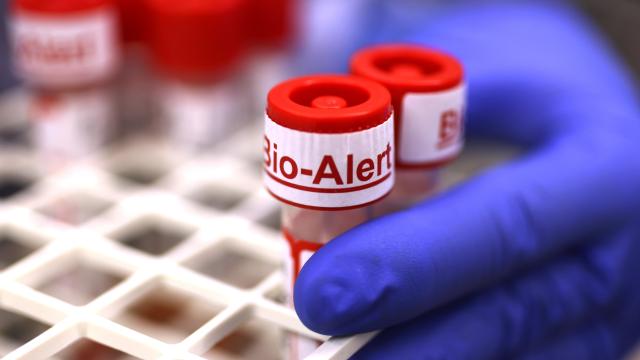The World Health Organisation has declared a public health emergency of international concern (PHEIC) over the current global outbreak of monkeypox. The declaration comes amid an ongoing rise in cases from dozens of countries this year, including over 2,000 cases reported in the United States.
In late June, the WHO convened an advisory committee of outside experts to discuss the outbreak. At the time, there had been over 3,000 cases reported from 47 countries, as well as evidence of sustained human-to-human transmission in at least some areas outside Africa, where it had previously been endemic among rodents, occasionally jumping to humans. The experts largely agreed that monkeypox had the potential to become a serious global health threat and that it would require intense effort and cooperation from countries to stop the virus from becoming established in new parts of the world. But they concluded that calling for a PHEIC right then and there would be premature — advice that WHO followed.
The WHO’s decision didn’t come without some criticism from the public health community at large. But the organisation did add that it would revisit the issue if the situation continued to worsen. A few weeks later, the WHO announced that a second meeting of the advisory committee would take place on July 21.
In the group’s initial assessment, the experts argued that monkeypox would meet the criteria for a PHEIC under one or more of several different conditions. These conditions included but weren’t limited to: evidence of a growing rise in the rate of new cases over the next three weeks, both among the groups so far most at risk and in other populations; evidence that the virus has spilled back into new animal reservoirs; and evidence that the virus has evolved to become more transmissible or able to cause more severe illness.
There certainly have been many more reports of monkeypox since then. As of July 22, there have been over 16,000 cases of monkeypox reported in over 75 countries, including more than 2,500 cases in the U.S. These cases have continued to be linked mostly to prolonged close contact during sex, and have remained concentrated among men who have sex with men, particularly men with multiple recent sexual partners. Women can and have contracted monkeypox , though, and there have been recent reports of infected children as well.
The committee was split on whether monkeypox now fit the criteria for a PHEIC, however. Six out of 14 members agreed that a PHEIC should be issued, while 8 said no. Ultimately, though, the WHO had the final word and the agency felt that at least some of these criteria have been fulfilled.
“WHO’s assessment is that the risk of monkeypox is moderate globally, except in the European region, where we assess that the risk is high. There is also a clear risk of further international spread,” said WHO Director-General Tedros Adhanom Ghebreyesus in a press conference Saturday. “So in short, we have an outbreak that has spread around the world rapidly, through new modes of transmission, about which we understand too little and which meets the criteria in the International Health Regulations.”
Though it’s sometimes seen as synonymous, a PHEIC declaration is not the same thing as calling a disease outbreak a pandemic. There is indeed no formal authority for a pandemic designation, and a PHEIC isn’t always a sign of a large global outbreak. Polio, for instance, has been nearly wiped out from the world and is endemic in only a few countries now. But with the goal of a polio-free world so close in sight, any sustained outbreaks in still-vulnerable countries would be a disastrous setback. And so, there’s been a PHEIC alert over polio in place since 2014, which has been repeatedly renewed.
That said, the designation does carry major importance for the recognition of a significant public health threat. Not long after a PHEIC was declared for covid-19 in February 2020, media outlets, governments, and eventually even the WHO began to refer to it as a pandemic. And some public health researchers have already begun to argue that the widespread nature of monkeypox transmission seen this year should merit the title of pandemic as well.
Some experts have noted that there are many important differences between monkeypox and covid-19. For one, though there is evidence in the lab that monkeypox can spread through respiratory droplets, it’s primarily being spread through prolonged close contact during these current outbreaks. There is also already an available vaccine against it, thanks to our earlier efforts in eradicating the related but now-extinct smallpox virus. Cases have been relatively mild as well, with few hospitalizations and life-threatening illness.
In his announcement, Ghebreyesus noted that the outbreak has mainly affected men who have sex with men with multiple partners. And this aspect may mean that it’s still possible to curb the virus before it spreads substantially further. He called for a greater marshaling of resources to stop the outbreak, such as vaccines and antiviral treatments, and for these resources to be distributed to those most at risk for monkeypox.
“With the tools we have now, we can stop transmission,” Ghebreyesus said.
Unfortunately, many scientists have become sceptical that it’s still possible to contain the virus before it gains a firm foothold in non-endemic areas of the world, in part due to a lagging public health response. And even if monkeypox won’t cause as much damage as covid-19 has, it could still become a painful recurring germ, perhaps as a newly routine sexually transmitted infection. The virus may also still be able to cause large outbreaks in other populations outside the groups it’s mostly infected to date.
The WHO’s alert is the latest sign that it will not be easy to limit monkeypox’s potential harm from here on out.
